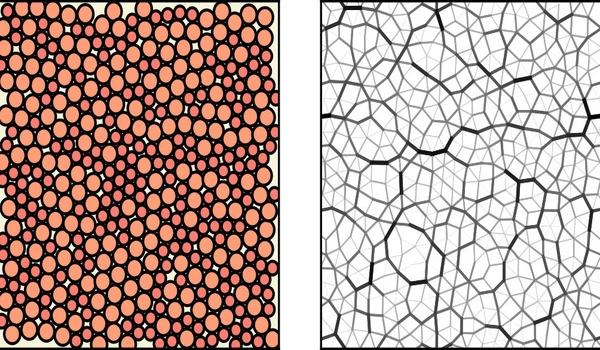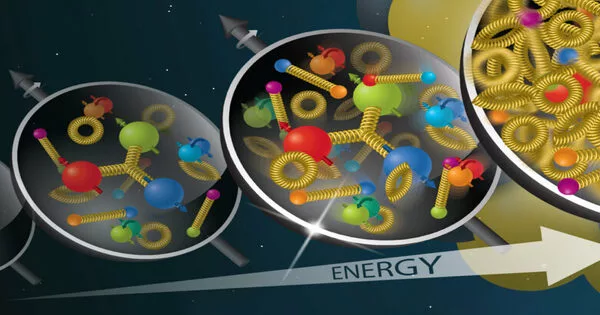We are surrounded by granular matter. Sand, rice, nuts, coffee, and even snow are some examples. These materials are composed of solid particles that are large enough in size to avoid thermal fluctuations. Instead, mechanical influences determine their state: shaking results in “granular gases,” while compression results in “granular solids.”
Forces within such solids concentrate along essentially linear paths called force chains, whose shape resembles that of lightning. Apart from granular solids, these force chains can be found in other complex solids such as dense emulsions, foams, and even groups of cells. To predict the position of force chains, researchers led by the University of Göttingen used machine learning and computer simulations. The findings were published in the journal Nature Communications.
The formation of force chains is highly dependent on how individual grains interact. This makes predicting where force chains will form extremely difficult. Researchers at the Institute for Theoretical Physics, University of Göttingen, and Ghent University tackled this challenge by developing a novel tool for predicting the formation of force chains in both frictionless and frictional granular matter using computer simulations and artificial intelligence tools.
Understanding force chains is crucial in describing the mechanical and transport properties of granular solids and this applies in a wide range of circumstances – for example how sound propagates or how sand or a pack of coffee grains respond to mechanical deformation.
Dr. Rituparno Mandal
The method employs a machine learning technique known as a graph neural network (GNN). Given an undeformed static structure, the researchers demonstrated that GNNs can be trained in a supervised approach to predict the position of force chains that arise while deforming a granular system.
“Understanding force chains is crucial in describing the mechanical and transport properties of granular solids and this applies in a wide range of circumstances – for example how sound propagates or how sand or a pack of coffee grains respond to mechanical deformation,” explains Dr. Rituparno Mandal, Institute for Theoretical Physics, University of Göttingen. Mandal adds, “A recent study even suggests that living creatures such as ants exploit the effects of force chain networks when removing grains of soil for efficient tunnel excavation.”

A granular material is a conglomeration of discrete solid, macroscopic particles characterized by a loss of energy whenever the particles interact (the most common example would be friction when grains collide). The constituents that compose granular material are large enough such that they are not subject to thermal motion fluctuations. Thus, the lower size limit for grains in granular material is about 1 μm. On the upper size limit, the physics of granular materials may be applied to ice floes where the individual grains are icebergs and to asteroid belts of the Solar System with individual grains being asteroids.
“We tested various machine learning-based tools and discovered that a trained GNN can generalize remarkably well from training data, allowing it to predict force chains in new undeformed samples,” Mandal says. “We were struck by how robust the method is: it works exceptionally well for a wide range of computer-generated granular materials.” “We are currently planning to extend this to experimental systems in the lab,” Corneel Casert, co-first author at Ghent University, added.
“The efficiency of this new method is surprisingly high for different scenarios with varying system size, particle density, and composition of different particle types,” says senior author Professor Peter Sollich of the Institute for Theoretical Physics at the University of Göttingen. This means it will be useful in understanding force chains for many types of granular matter and systems.
















